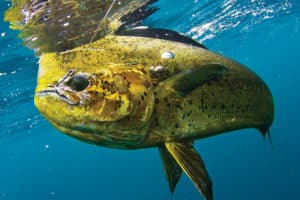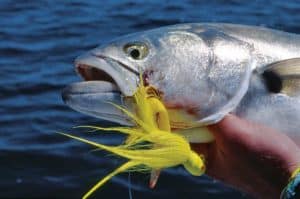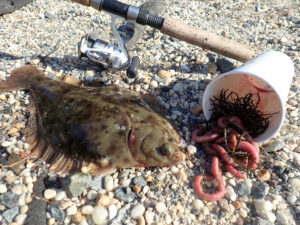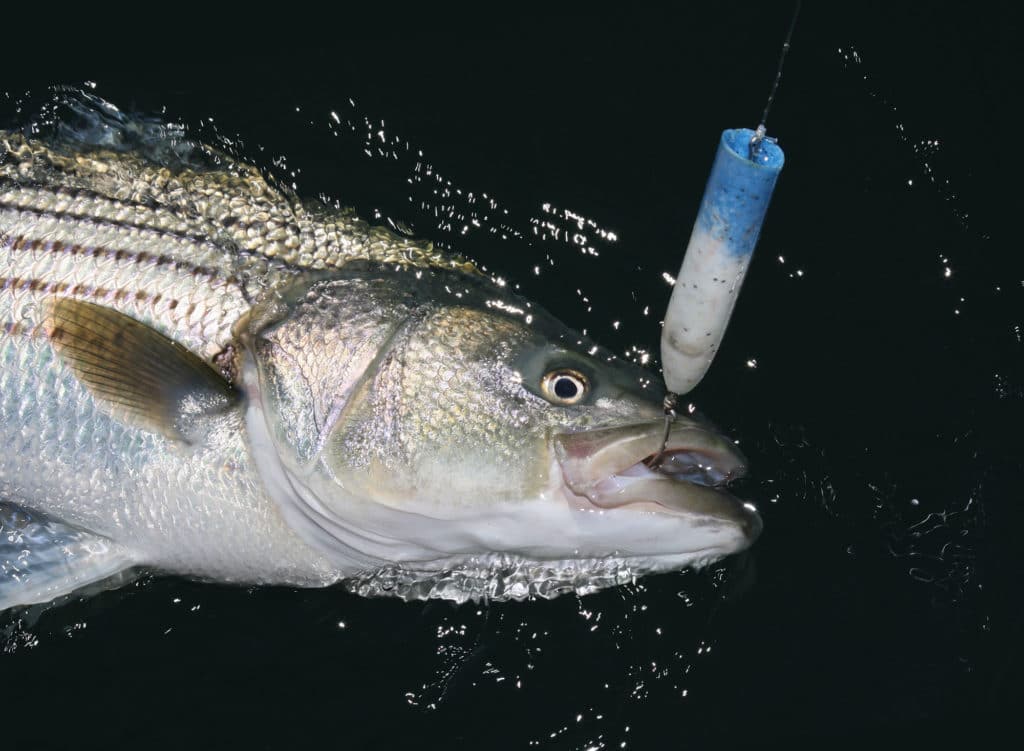
Circle hooks have taken over many fishing applications for their conservation and hook-setting benefits, but some captains say anglers might be missing an important point: J hooks perform more effectively in certain situations.
When targeting fish with small mouths, such as tautog and winter flounder, or when pursuing aggressive gamefish, such as tuna or mahi, captains often choose J hooks. Traditional inline Js also work best when replacing lure trebles with single hooks (a process that also offers conservation benefits), and for targeting certain soft‑mouthed predators such as swordfish. But choosing the right hook always boils down to a case-by-case approach.
Bait Fishing with Crabs and Blood Worms
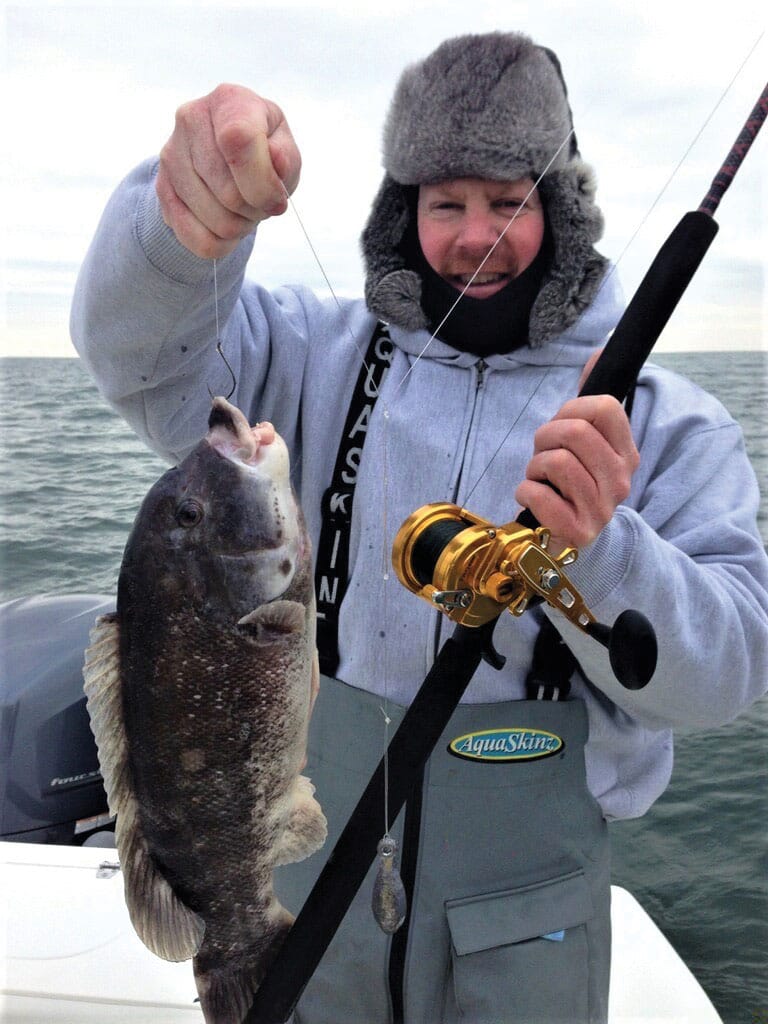
“We typically use J and octopus hooks when we’re fishing for blackfish,” says Capt. John Luchka of Point Pleasant, New Jersey. “They have small mouths, and we use green, white-legger and fiddler crabs. You need that wide gap between the point of the hook and the shank to hook the crabs.”
Luchka says the tautog’s big front teeth and crushers usually prevent deep-hooking. In most cases, they’re hooked in the lip or mouth area. He cuts off the legs and claws of the crabs and runs a 3/0 or 4/0 hook through the bottom part of the crustacean where he removed one of its legs. Luchka uses inline J hooks for stripers when he’s fishing lures. He replaces treble hooks on swimming plugs with J hooks, which are easier to remove from a striper’s mouth.
J hooks also work better than circle hooks for winter flounder, he says. “They have a very, very small mouth, so we use a long-shank J-style hook or a bait-holder hook,” Luchka explains. “You’re not catching the fish deep in the throat or the gullet. For bait, we use sand worms or blood worms and thread them on the hook, a Chestertown 2/0 or 3/0. It’s hard to do that with a circle hook. And the longer shank of the hook gives you the leverage to remove the hook from a fish’s mouth and release it.”
Tuna Fishing on the Troll
When Luchka runs to the canyons for tuna and mahi, he trolls rigged ballyhoo with a 6/0 to 8/0 J hook, depending on the bait size. “[Mahis’] feeding behavior is very vigorous, so most of the time you’re going to hook that fish in the mouth,” he says.
To catch tuna, he fishes either naked ballyhoo or pairs that bait with a Joe Shute skirted lure. J hooks lie flat in the bait, unlike circle hooks, which would have to be bridled to a ballyhoo because “it’s next to impossible to thread a bait on a circle hook.”
When to Use J-Hooks
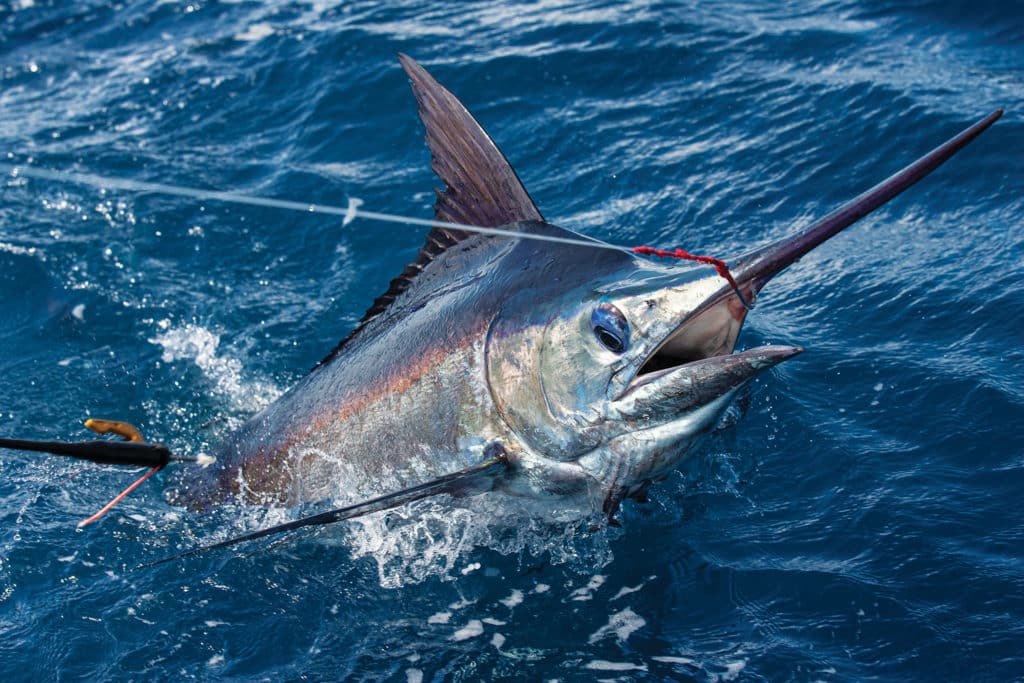
Capt. Tony DiGiulian, of Fort Lauderdale, Florida, also replaces the plug trebles with J hooks. Otherwise, he only uses J hooks when he trolls lures and when he’s daytime swordfishing. Although he experiments with circle hooks for that fishery.
“You would probably have a better hookup ratio,” says DiGiulian, who releases both undersize and keeper-size swordfish. “If we get into a big pod of mahi, one thing we do is try to release a lot of fish. If we’re catching 5-or 6-pound females, we let all of them go. Our personal standard for size is way higher than what the state or federal limits are. We use circle hooks because we want to make sure that we can harvest the fish that we target, and that the fish we are releasing are released in good condition.”
When trolling for kingfish with planers and lures or strip baits, or targeting big blue marlin and tuna, he uses J hooks. “If I were trolling, I’d use either a single J hook or a double J hook set,” he adds.
Under special circumstances, he also uses J hooks when live-baiting for kingfish. “If I’m targeting just kingfish, and I know I’m in a spot where there are no sailfish around, I might fish some J hooks with live baits,” he explains. “Fish such as kingfish or wahoo, with really sharp teeth, like to immobilize a bait by biting off the tail or biting it in half. Then they eat the remaining chunk as it sinks, and the hookup ratio with a J hook is traditionally greater. Kingfish of 5 to 10 pounds are harder to hook on a circle hook. The big ones eat the whole bait on a circle hook.”
Better Hooks for Baitfish
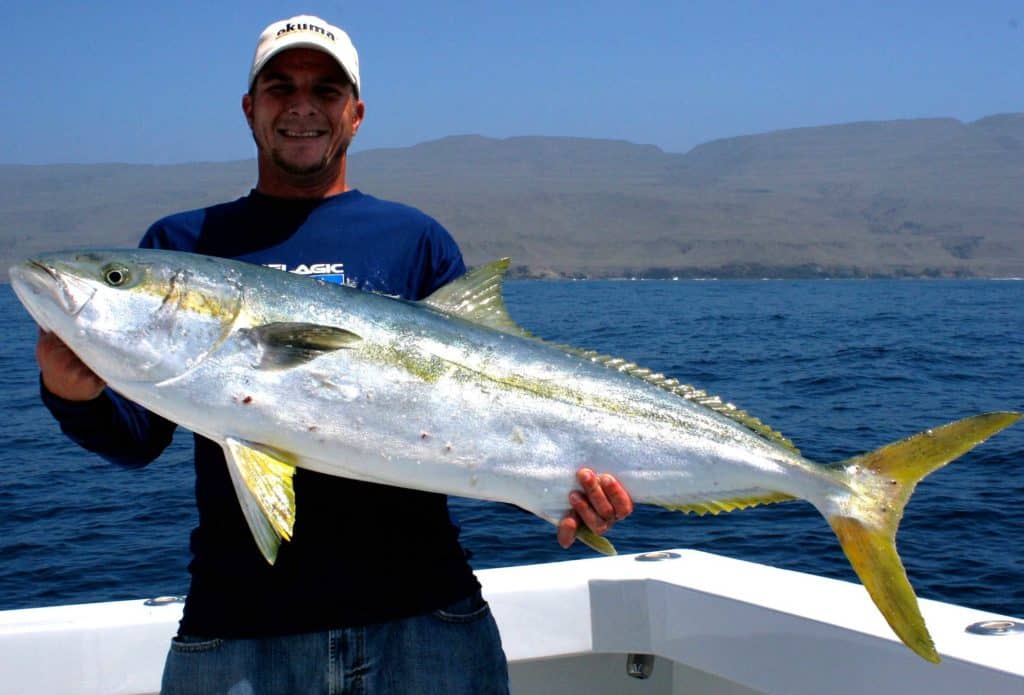
Capt. Jamie Thinnes, who fishes out of Fisherman’s Landing in San Diego, says he primarily uses J hooks except when he’s fishing for bluefin tuna. A drawn-out battle with a bluefin often ends when the tuna spits the J hook because the angler failed to stay tight to the fish as it neared the boat and begin moving erratically.
“Bluefin tuna, they’re just smart; they just roll over and do a complete 180 on you,” he says. “Our catch rate is usually a lot higher with circle hooks.”
Yellowfin tuna are a different story. “If we’re fishing for yellowfins or yellowtail, we’re using mostly J hooks. A 3- to 4-inch live sardine is a perfect yellowtail-size bait.”
Thinnes uses light line, 20-pound fluorocarbon leaders and No. 2 and No. 4 Mustad bronze hooks up to 1/0 or 2/0. “For a small bait to swim really well, we have to collar-hook it. Being able to get a bait on the hook without damaging the bait is important. A J hook hurts the bait less. We’re able to grab a bait out of the livewell, snap it on the hook and let it out immediately. The less handling the better. Hooking a bait on a circle hook is more challenging.”
So don’t let those old J hooks rust just yet. At times, they’ll run circles around the competition.

